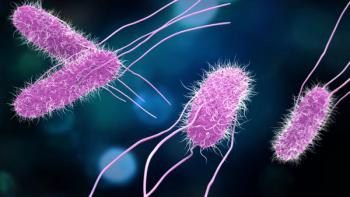
Enlisting Pharmacists for HIV Prevention
Due to physician shortages, pharmacists represent a new avenue to increase accessibility to antivirals.
The health care system has tried numerous interventions to contain HIV. Researchers have made great contributions to contain this epidemic with the help of antiretrovirals. Antiretrovirals—used for both HIV prevention and treatment—are effective, but accessibility poses a problem for patients because they require a prescription.
Antiretrovirals are used in both pre-exposure prophylaxis (PrEP) and post exposure prophylaxis (PEP), and are prescribed to decrease HIV transmission. PrEP is indicated for HIV-negative patients who plan to have sex with someone who is HIV-positive; in other words, it’s given before exposure. PrEP must be taken daily and requires 100% adherence. PEP is indicated after an exposure event (from contaminated needle or HIV-positive person).
A perspective piece in the American Journal of Public Health explains that due to physician shortages, pharmacists represent a new avenue to increase accessibility to antivirals. In considering this avenue, society must first consider barriers and then eliminate them to enable expansion of the pharmacist’s role in HIV prevention:
- Policy must be expanded to allow pharmacists to administer point-of-care HIV testing and prescribe both PrEP and PEP medications
- Education must be enhanced by incorporating HIV management and prevention into each pharmacy school’s curriculum and developing continuing education courses for HIV prevention
- Infrastructure needs to expand to include a private area for patient consultation, also called a "judgment-free” zone
Pharmacists can assume several responsibilities in the prescribing process:
- Taking patients history
- Maintaining comprehensive medical records for patients
- Making a risk assessment to determine if a patient is eligible for PrEP or PEP—evaluating sexual behavior, inquiring about sexual partner(s)
- Completing lab testing and counseling before dispensing medication
- Following-up with patients
Pharmacists are accessible and can be seen without appointments. Pharmacies are also open for extended hours, compared to doctor’s offices. Additionally, because pharmacies see patients with all kinds of conditions, patients will feel “less-judged” and be free of the stigmas that come along with being HIV-positive. Another benefit is the immediate access patients have to their medications when the pharmacist both prescribes and dispenses the antiretroviral therapy.
RELATED ARTICLES
- Senate Bill Proposes Expansion of PrEP Access
- Immune Responses to HIV May Be Preserved by Antiretroviral Treatment
Reference
Myers JE, Farhat D, Guzman A, Arya V. Pharmacists in HIV Prevention: An Untapped Potential. Am J Public Health. 2019 Jun;109(6):859-861. doi: 10.2105/AJPH.2019.305057.
Newsletter
Stay informed on drug updates, treatment guidelines, and pharmacy practice trends—subscribe to Pharmacy Times for weekly clinical insights.


















































































































































































































